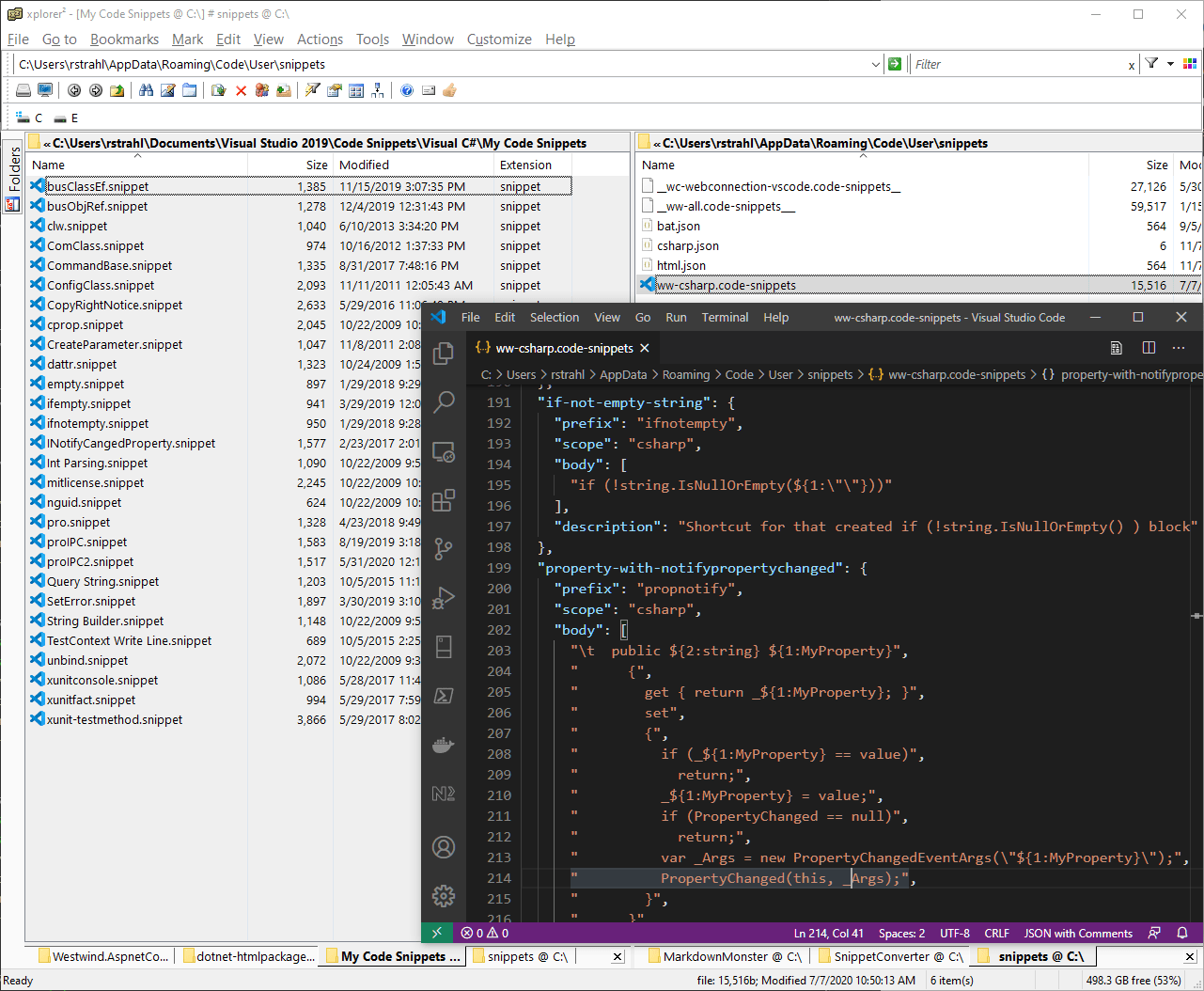
- #Visual studio code snippets powershell install#
- #Visual studio code snippets powershell full#
- #Visual studio code snippets powershell code#
There is another way to debug PowerShell files that add some additional features to the debug experience.įor example you can choose if you want to debug the script in an interactive session or into a PowerShell host process running on your PC. ps1 file in VS Code, set a break point (with the click on bar with the mouse or pressing F9 to the line of code) and press F5 to start a debug session. Since the version 1.9 you can debug single file without open the containing folder of the script. If you want to try them with some example scripts, you can click on the menu File->Open Folder or hit Ctrl+K Ctrl+O quickly and navigate to this folder:Įnter fullscreen mode Exit fullscreen modeīecause you have added the language name, the other languages are not affected with these behaviors. Now you are ready to play and work with PowerShell and Visual Studio Code. If you click on it, the same command pallet appears on the top bar. You can also select the PowerShell version from the green PowerShell icon on the bottom right of your editor. Now you can choose the right version of PowerShell from the dropdown. If you have to choose a particular version for your script, you can open the command palette ( Ctrl+Shift+P or Cmd+Shift+P on Mac) and write PowerShell: Show Session Menu.
#Visual studio code snippets powershell install#
You can install on your machine PowerShell Core side-by-side with PowerShell Vx. The editor opens a side bar Extensions with the PowerShell extension selected.Ĭhoose the version of PowerShell for your session
#Visual studio code snippets powershell code#
Launch Visual Studio Code and press Ctrl+P ( Cmd+P on Mac). To install PowerShell Core on these platforms, you can follow the installation instructions directly from the Microsoft website: On Windows you can also PowerShell v3 and higher. PowerShell Core is supported by Linux, OSx and Windows and you can use Visual Studio Code extension for PowerShell in all of these releases.

Choose the version of PowerShell for your session.The reason is really simple: Visual Studio Code is more powerful than PowerShell IDE. Since many years, almost four, I started using Visual Studio Code to edit every kind of files, including PowerShell files. It worked very well, but it looked like "old". If you have already saved your script with appropriate file extension and need the shebang, you can alternatively just start typing shebang to complete the line for your script type.Whether you're a developer or an it pro, you definitely have to deal with PowerShell sometimes.įor several year I used to develop PowerShell script into PowerShell ISE. The snippet offers different encodings for selection. To insert the magic comment for encoding ( # -*- coding: utf-8 -*-) you can also just type #encoding. PowerShell Core: #!pwsh or #!powershell -> #!/usr/bin/env pwsh.Groovy: #!groovy -> #!/usr/bin/env groovy.F#: #!fsharp -> #!/usr/bin/env fsharpi -exec.Expect: #!expect -> #!/usr/bin/expect -f.


#Visual studio code snippets powershell full#
FeaturesĪfter opening a new file you can just type #! and the interpreter name to add the full line. Set of snippets for Visual Studio Code to insert "shebang" lines for various types of scripts and interpreters used on Unix-like systems.


 0 kommentar(er)
0 kommentar(er)
